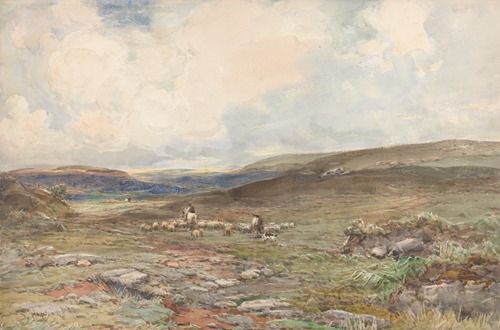
Claude Hayes was a Dublin born painter who, to avoid his father's wish to make a businessman of him, ran away to sea and served on the Golden Fleece, one of the transports used in the Abyssinian expedition of 1867-68. He also spent a year in the United States. Returning to London, he studied art at Heatherley's and the Royal Academy Schools, and then in Antwerp, under Charles Verlat. He worked in Hampshire with James Aumonier and also in Surrey with William Charles Estall, whose sister he married.
Hayes exhibited widely in London and provincial centres, and was elected a member of the Royal Institute of Painters in Water Colours in 1886, the Royal Institute of Oil Painters in 1883, and the Royal Scottish Society of Painters in Watercolour, 1902. He also showed at the RA, RBSA, Brook Street Art Gallery, Dudley Gallery, FAS, GI, Grosvenor Gallery, Walker Art Gallery, Liverpool, MAFA, RBA, RHA, Ridley Art Club, RSW and Walker's Gallery, London. In 1912, Claude Hayes represented England at the Venice Biennale. His work is in various public collections in England and Ireland including the Ulster Museum, Museums Sheffield, Torre Abbey Museum and the Leeds City Art Gallery. His father was the artist Edwin Hayes.

